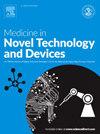Polysaccharide-derived carbon quantum dots: advances in preclinical studies, theranostic applications, and future clinical trials
Q3 Medicine
引用次数: 0
Abstract
Polysaccharide-derived carbon quantum dots (CQDs) have emerged as promising nanomaterials, valued for their biocompatibility, low toxicity, and outstanding fluorescence characteristics, which make them ideal for diverse biomedical applications, particularly in theranostics. These carbon-based nanoparticles uniquely merge diagnostic and therapeutic capabilities, holding significant potential for both detecting and treating various diseases. Renewable and abundant polysaccharides—such as chitosan, starch, cellulose, pectin, alginate, dextran, and heparin—are excellent carbon precursors for CQD synthesis. Their inherent functional groups, like hydroxyl and carboxyl, enhance the stability, solubility, and adaptability of the resulting CQDs, broadening their application in imaging, drug delivery, and cancer treatment. Additionally, these CQDs have demonstrated potential in targeted drug delivery, controlled release systems, and tissue regeneration, solidifying their role in both diagnostic and therapeutic realms. This review examines recent progress in the synthesis of polysaccharide-derived CQDs, emphasizing preclinical studies that showcase their use in imaging, drug delivery, and cancer therapy. It further explores their prospective role in theranostic applications and outlines the challenges that must be overcome to transition these nanomaterials into clinical trials. With continued research and innovation, polysaccharide-derived CQDs are poised to contribute significantly to future clinical applications, facilitating more effective and personalized treatment strategies across a spectrum of diseases.
多糖衍生的碳量子点:临床前研究、治疗应用和未来临床试验的进展
多糖衍生的碳量子点(CQDs)已成为一种有前途的纳米材料,其生物相容性、低毒性和突出的荧光特性使其成为各种生物医学应用的理想选择,特别是在治疗学方面。这些碳基纳米颗粒独特地融合了诊断和治疗能力,在检测和治疗各种疾病方面具有巨大的潜力。壳聚糖、淀粉、纤维素、果胶、海藻酸盐、葡聚糖和肝素等丰富的可再生多糖是合成CQD的优良碳前体。其固有的官能团,如羟基和羧基,增强了CQDs的稳定性、溶解度和适应性,扩大了其在成像、药物传递和癌症治疗方面的应用。此外,这些CQDs在靶向药物递送、控释系统和组织再生方面已经显示出潜力,巩固了它们在诊断和治疗领域的作用。本文综述了多糖来源的CQDs合成的最新进展,重点介绍了其在成像、药物传递和癌症治疗方面的临床前研究。它进一步探讨了它们在治疗应用中的潜在作用,并概述了将这些纳米材料转化为临床试验必须克服的挑战。随着不断的研究和创新,多糖衍生的CQDs将为未来的临床应用做出重大贡献,促进更有效和个性化的治疗策略。
本文章由计算机程序翻译,如有差异,请以英文原文为准。
求助全文
约1分钟内获得全文
求助全文
来源期刊

Medicine in Novel Technology and Devices
Medicine-Medicine (miscellaneous)
CiteScore
3.00
自引率
0.00%
发文量
74
审稿时长
64 days
 求助内容:
求助内容: 应助结果提醒方式:
应助结果提醒方式:


